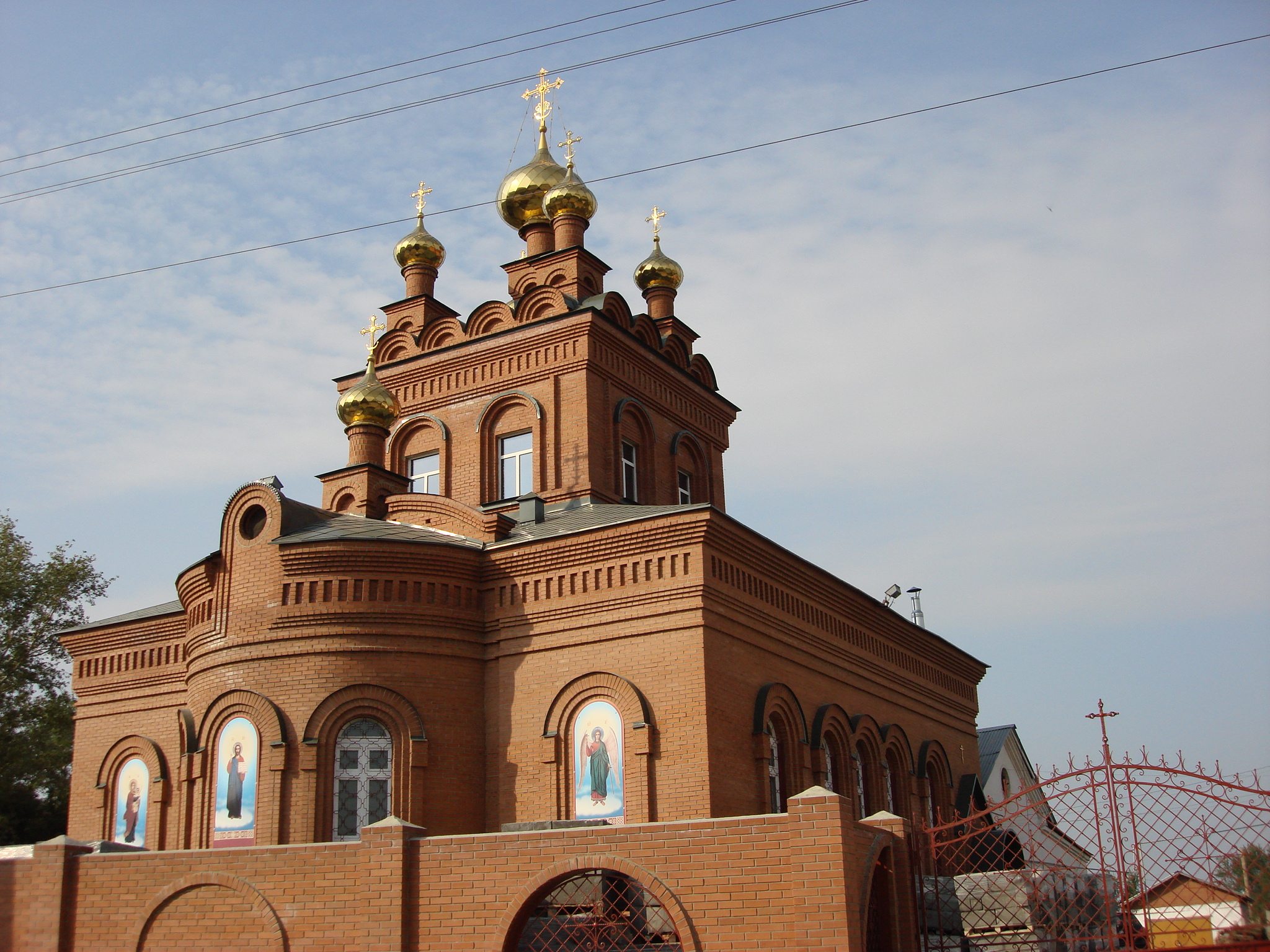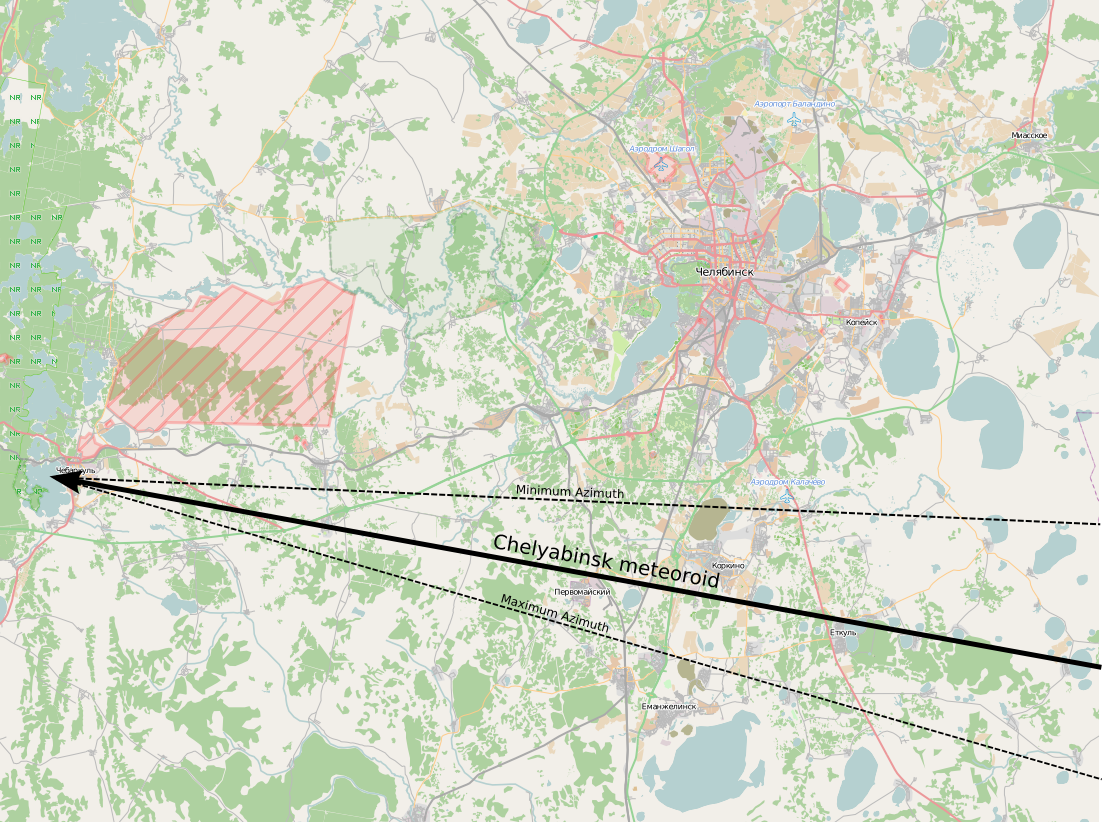|
Yuzhnouralsk
Yuzhnouralsk (russian: Южноура́льск) is a town in Chelyabinsk Oblast, Russia, located on the Uvelka River south of Chelyabinsk. Population: History It was founded in 1948. Town status was granted to it on February 1, 1963.. It was one of the towns closest to the hypocenter of the blast from the 2013 Russian meteor event. Administrative and municipal status Within the framework of administrative divisions, it is, together with one rural locality, incorporated as the Town of Yuzhnouralsk—an administrative unit with the status equal to that of the districts A district is a type of administrative division that, in some countries, is managed by the local government. Across the world, areas known as "districts" vary greatly in size, spanning regions or county, counties, several municipality, municipa ....Resolution #161 As a municipal division, the Town of Yuzhnouralsk is incorporated as Yuzhnouralsky Urban Okrug. References Notes Sources * {{Use mdy ... [...More Info...] [...Related Items...] OR: [Wikipedia] [Google] [Baidu] |
Chelyabinsk Oblast
Chelyabinsk Oblast (russian: Челя́бинская о́бласть, ''Chelyabinskaya oblast'') is a federal subject (an oblast) of Russia in the Ural Mountains region, on the border of Europe and Asia. Its administrative center is the city of Chelyabinsk. Its population is 3,476,217. ( 2010 Census). History During the Middle Ages, Bashkir tribes inhabited the Southern Urals; they formed part of the Golden Horde, Nogai Horde, and smaller Bashkir unions. The Tsardom of Russia incorporated the area in the late 16th century. However, Russian colonization of the region only began in the 18th century, with the establishment of a system of fortresses and trade posts on the then-Russian border by the in 1734. Many cities of Chelyabinsk Oblast, including the city of Chelyabinsk itself, trace their history back to those forts. In 1743 the Chelyabinsk fortress became a center of the , a constituent part of the Orenburg Governorate (a direct successor of the Orenburg E ... [...More Info...] [...Related Items...] OR: [Wikipedia] [Google] [Baidu] |
2013 Russian Meteor Event
The Chelyabinsk meteor was a superbolide that entered Earth's atmosphere over the southern Ural region in Russia on 15 February 2013 at about 09:20 YEKT (03:20 UTC). It was caused by an approximately near-Earth asteroid that entered the atmosphere at a shallow 18.3 ± 0.4 degree angle with a speed relative to Earth of 19.16 ± 0.15 kilometres per second (69,000 km/h or 42,690 mph). The light from the meteor was briefly brighter than the Sun, visible up to away. It was observed over a wide area of the region and in neighbouring republics. Some eyewitnesses also felt intense heat from the fireball. The object exploded in a meteor air burst over Chelyabinsk Oblast, at a height of around . The explosion generated a bright flash, producing a hot cloud of dust and gas that penetrated to , and many surviving small fragmentary meteorites. The bulk of the object's energy was absorbed by the atmosphere, creating a large shock wave with a total kinetic energy before a ... [...More Info...] [...Related Items...] OR: [Wikipedia] [Google] [Baidu] |
Administrative Divisions Of Chelyabinsk Oblast ...
Administrative and municipal divisions References {{Use mdy dates, date=September 2013 Chelyabinsk Oblast Chelyabinsk Oblast Chelyabinsk Oblast (russian: Челя́бинская о́бласть, ''Chelyabinskaya oblast'') is a federal subject (an oblast) of Russia in the Ural Mountains region, on the border of Europe and Asia. Its administrative center is th ... [...More Info...] [...Related Items...] OR: [Wikipedia] [Google] [Baidu] |
City Of Federal Subject Significance
City of federal subject significance is an administrative division of a federal subject of Russia which is equal in status to a district but is organized around a large city; occasionally with surrounding rural territories. Description According to the 1993 Constitution of Russia, the administrative-territorial structure of the federal subjects is not identified as the responsibility of the federal government or as the joint responsibility of the federal government and the federal subjects."Энциклопедический словарь конституционного права". Статья "Административно-территориальное устройство". Сост. А. А. Избранов. — Мн.: Изд. В.М. Суров, 2001. This state of the matters is traditionally interpreted by the governments of the federal subjects as a sign that the matters of the administrative-territorial divisions are the sole responsibility of the fe ... [...More Info...] [...Related Items...] OR: [Wikipedia] [Google] [Baidu] |
Types Of Inhabited Localities In Russia
The classification system of human settlement, inhabited localities in Russia and some other post-Soviet Union, Soviet states has certain peculiarities compared with those in other countries. Classes During the Soviet Union, Soviet time, each of the republics of the Soviet Union, including the Russian Soviet Federative Socialist Republic, Russian SFSR, had its own legislative documents dealing with classification of inhabited localities. After the history of the Soviet Union (1985-1991), dissolution of the Soviet Union, the task of developing and maintaining such classification in Russia was delegated to the federal subjects of Russia, federal subjects.Articles 71 and 72 of the Constitution of Russia do not name issues of the administrative and territorial structure among the tasks handled on the federal level or jointly with the governments of the federal subjects. As such, all federal subjects pass :Subtemplates of Template RussiaAdmMunRef, their own laws establishing the s ... [...More Info...] [...Related Items...] OR: [Wikipedia] [Google] [Baidu] |
Russia
Russia (, , ), or the Russian Federation, is a transcontinental country spanning Eastern Europe and Northern Asia. It is the largest country in the world, with its internationally recognised territory covering , and encompassing one-eighth of Earth's inhabitable landmass. Russia extends across eleven time zones and shares land boundaries with fourteen countries, more than any other country but China. It is the world's ninth-most populous country and Europe's most populous country, with a population of 146 million people. The country's capital and largest city is Moscow, the largest city entirely within Europe. Saint Petersburg is Russia's cultural centre and second-largest city. Other major urban areas include Novosibirsk, Yekaterinburg, Nizhny Novgorod, and Kazan. The East Slavs emerged as a recognisable group in Europe between the 3rd and 8th centuries CE. Kievan Rus' arose as a state in the 9th century, and in 988, it adopted Orthodox Christianity from the ... [...More Info...] [...Related Items...] OR: [Wikipedia] [Google] [Baidu] |
Chelyabinsk
Chelyabinsk ( rus, Челя́бинск, p=tɕɪˈlʲæbʲɪnsk, a=Ru-Chelyabinsk.ogg; ba, Силәбе, ''Siläbe'') is the administrative center and largest city of Chelyabinsk Oblast, Russia. It is the seventh-largest city in Russia, with a population of over 1.1 million people, and the second-largest city in the Ural Federal District, after Yekaterinburg. Chelyabinsk runs along the Miass River, and is just east of the Ural Mountains. The area of Chelyabinsk contained the ancient settlement of Arkaim, which belonged to the Sintashta culture. In 1736, a fortress by the name of Chelyaba was founded on the site of a Bashkir village. Chelyabinsk was granted town status by 1787. Chelyabinsk began to grow rapidly by the early 20th century as a result of the construction of railway links from the Russian core to Siberia, including the Trans-Siberian Railway. Its population reached 70,000 by 1917. Under the Soviet Union, Chelyabinsk became a major industrial centre durin ... [...More Info...] [...Related Items...] OR: [Wikipedia] [Google] [Baidu] |
Hypocenter
In seismology, a hypocenter or hypocentre () is the point of origin of an earthquake or a subsurface nuclear explosion. A synonym is the focus of an earthquake. Earthquakes An earthquake's hypocenter is the position where the strain energy stored in the rock is first released, marking the point where the fault begins to rupture.''The hypocenter is the point within the earth where an earthquake rupture starts. The epicenter is the point directly above it at the surface of the Earth. Also commonly termed the focus.'' This occurs directly beneath the epicenter, at a distance known as the ''hypocentral depth'' or ''focal depth''. The focal depth can be calculated from measurements based on seismic wave phenomena. As with all wave phenomena in physics, there is uncertainty in such measurements that grows with the wavelength so the focal depth of the source of these long-wavelength (low frequency) waves is difficult to determine exactly. Very strong earthquakes radiate a large ... [...More Info...] [...Related Items...] OR: [Wikipedia] [Google] [Baidu] |
Subdivisions Of Russia
Russia is divided into several types and levels of subdivisions. Federal subjects Since 30 September 2022, the Russian Federation has consisted of eighty-nine federal subjects that are constituent members of the Federation.Constitution, Article 65 However, six of these federal subjects—the Republic of Crimea, the Donetsk People's Republic, the Kherson Oblast, the Lugansk People's Republic, the federal city of Sevastopol and the Zaporozhye Oblast—are internationally recognized as part of Ukraine. All federal subjects are of equal federal rights in the sense that they have equal representation—two delegates each—in the Federation Council (upper house of the Federal Assembly). They do, however, differ in the degree of autonomy they enjoy. De jure, there are 6 types of federal subjects—24 republics, 9 krais, 48 oblasts, 3 federal cities, 1 autonomous oblast, and 4 autonomous okrugs. Autonomous okrugs are the only ones ... [...More Info...] [...Related Items...] OR: [Wikipedia] [Google] [Baidu] |


